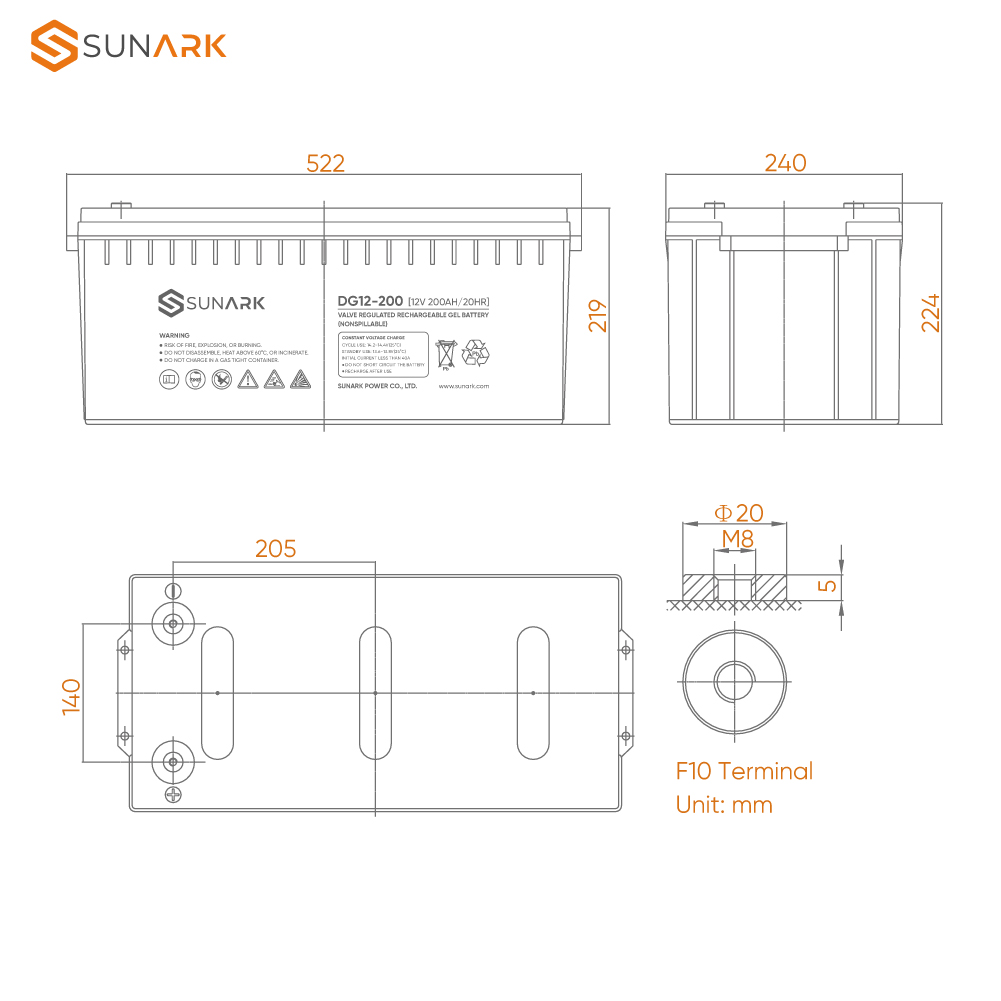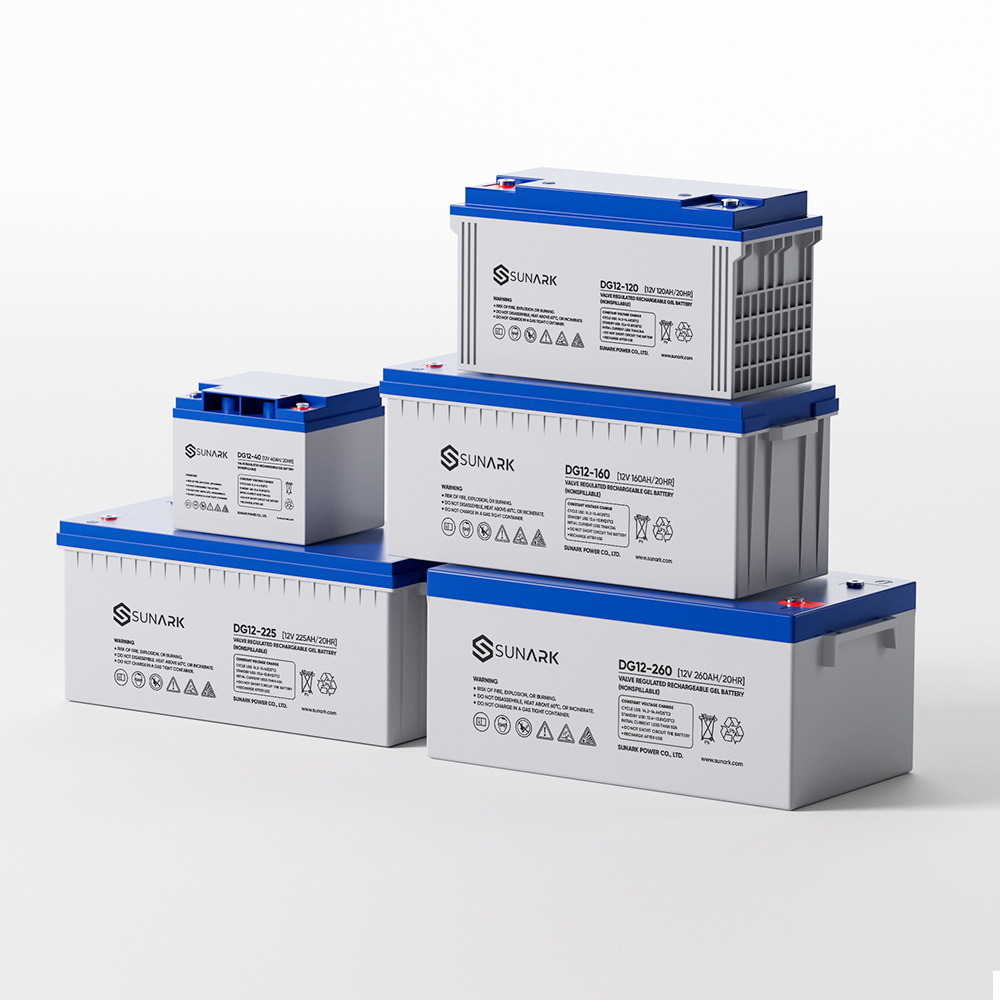Brand:
SunArkCells Per Unit:
6Voltage Per Unit:
12VDesign Life:
20 years (Float charging)Standby Use Voltage:
13.6V~13.8V @25°CCycle Use Voltage:
14.2V~14.4V @25°COperating Temperature Range:
Discharge: -15°C~50°C Charge: 0°C~40°C Storage: -15°C~50°CNormal Operating Temperature Range:
25°C ± 5°CSelf Discharge:
Monthly Self-discharge ratio is less than 3.5% at 25°C.Container Material:
A.B.S. UL94-HB UL94-V0 Optional
The Capacity Of GEL Battery

Plate Selection For Gel Batteries
Lead-Calcium Plates: Lead-Calcium Plates are one of the common gel battery plates. They use an alloy of lead and calcium as electrode material, which has high electrolyte density and battery capacity, and also has strong resistance to self-discharge. Lead-calcium plates are commonly used in applications requiring high capacity and low self-discharge characteristics.
Lead-Tin Plates: Lead-Tin Plates are another common gel battery plate. They use an alloy of lead and tin as electrode material, which has high corrosion resistance and long life. Lead-tin plates are typically used in applications requiring higher cycle life and plate corrosion resistance.
Hybrid Plates: Hybrid plates combine different types of materials such as lead-calcium, lead-tin, and other alloys. The plates are designed to balance properties such as capacity, cycle life and self-discharge. Hybrid plates are often used in applications that require a combination of high capacity and long life.

The Role Of Gel In GEL Batteries
Prevent leakage: Gel-solidified electrolyte can effectively prevent battery electrolyte leakage. Compared with liquid electrolytes, gel batteries are safer and more reliable during use and transportation.
Inhibit sulfuration: The gel structure can inhibit the sulfurization reaction in the battery. Vulcanization is a common failure mechanism in gel batteries that results in reduced battery capacity and cycle life. Through the formation of gel structure, the occurrence of sulfation reaction can be reduced and the stability and life of the battery can be improved.
Increase the contact area of the battery's active materials: The gel structure has a larger surface area, which can increase the contact area between the active materials and the electrodes, improving the battery's electrochemical reaction efficiency and energy output capability.